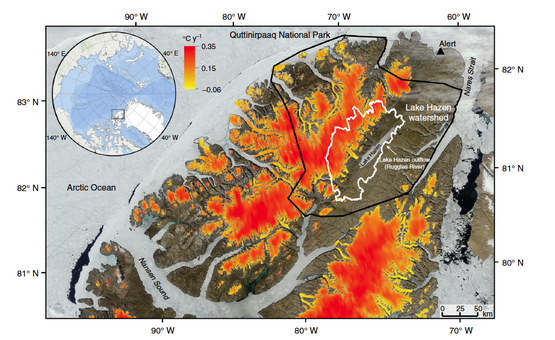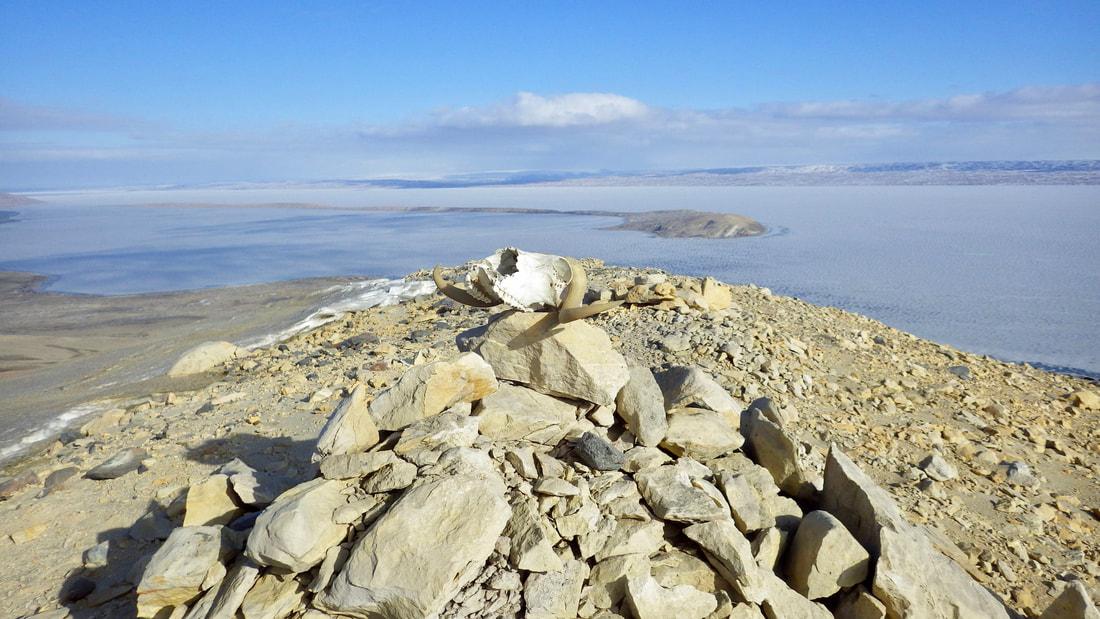The Lake Hazen Watershed
The Lake Hazen watershed is located on northern Ellesmere Island, within the boundaries of Quttinirpaaq National Park, the second largest national park in Canada. At the heart of the watershed is Lake Hazen, the world's largest lake by volume (51.4 cubic km) entirely above the Arctic Circle (66N). The lake itself is fed by the outlet glaciers of the Northern Ellesmere Icefield along its northwestern coast. Small thermokarst ponds and wetlands dot the landscape and feed into the lake but are insignificant hydrologically when compared to the glacier-fed rivers. Lake Hazen drains out the Ruggles River along its eastern shoreline to Chandler and then Coneybeare Fjords on the eastern coast of Ellesmere Island, directly across Nares Strait from Greenland.
Despite its polar location, the watershed itself is considered a High Arctic thermal oasis, owing to its protected location on the leeward side of the Empire Range of the Grant Land Mountains. Temperatures in the summer can reach up to 18-20C, but in the winter can fall below -50C. The watershed experiences polar night (24 h darkness) from the middle of October to February each year, and polar day (24 h sunlight) from the middle of April to early September.
Despite its polar location, the watershed itself is considered a High Arctic thermal oasis, owing to its protected location on the leeward side of the Empire Range of the Grant Land Mountains. Temperatures in the summer can reach up to 18-20C, but in the winter can fall below -50C. The watershed experiences polar night (24 h darkness) from the middle of October to February each year, and polar day (24 h sunlight) from the middle of April to early September.
Formal scientific research in the Lake Hazen Watershed has been taking place since the International Geophysical Year in 1957-58. Whereas Lake Hazen has been protected area since 1988, it has been part of Quttinirpaaq National Park since its establishment in 2002, and is one of three stations within the national park, along with Ward Hunt Island and Tanquary Fjord.


